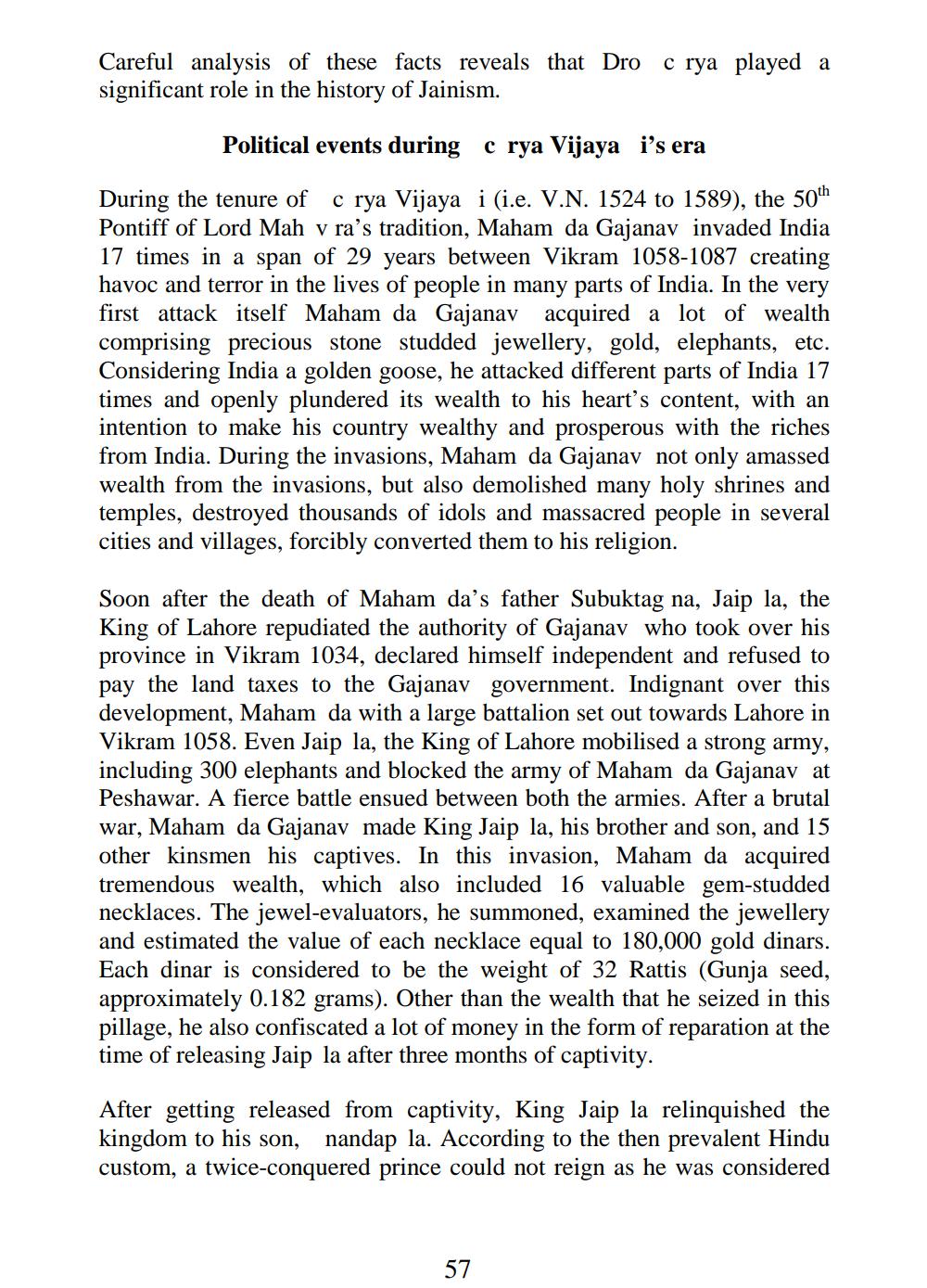________________
Careful analysis of these facts reveals that Dro significant role in the history of Jainism.
c rya played a
Political events during c rya Vijaya i’s era
During the tenure of c rya Vijaya i (i.e. V.N. 1524 to 1589), the 50th Pontiff of Lord Mah v ra's tradition, Maham da Gajanav invaded India 17 times in a span of 29 years between Vikram 1058-1087 creating havoc and terror in the lives of people in many parts of India. In the very first attack itself Maham da Gajanav acquired a lot of wealth comprising precious stone studded jewellery, gold, elephants, etc. Considering India a golden goose, he attacked different parts of India 17 times and openly plundered its wealth to his heart's content, with an intention to make his country wealthy and prosperous with the riches from India. During the invasions, Maham da Gajanav not only amassed wealth from the invasions, but also demolished many holy shrines and temples, destroyed thousands of idols and massacred people in several cities and villages, forcibly converted them to his religion.
Soon after the death of Maham da's father Subuktag na, Jaip la, the King of Lahore repudiated the authority of Gajanav who took over his province in Vikram 1034, declared himself independent and refused to pay the land taxes to the Gajanav government. Indignant over this development, Maham da with a large battalion set out towards Lahore in Vikram 1058. Even Jaip la, the King of Lahore mobilised a strong army, including 300 elephants and blocked the army of Maham da Gajanav at Peshawar. A fierce battle ensued between both the armies. After a brutal war, Maham da Gajanav made King Jaip la, his brother and son, and 15 other kinsmen his captives. In this invasion, Maham da acquired tremendous wealth, which also included 16 valuable gem-studded necklaces. The jewel-evaluators, he summoned, examined the jewellery and estimated the value of each necklace equal to 180,000 gold dinars. Each dinar is considered to be the weight of 32 Rattis (Gunja seed, approximately 0.182 grams). Other than the wealth that he seized in this pillage, he also confiscated a lot of money in the form of reparation at the time of releasing Jaip la after three months of captivity.
After getting released from captivity, King Jaip la relinquished the kingdom to his son, nandap la. According to the then prevalent Hindu custom, a twice-conquered prince could not reign as he was considered
57




